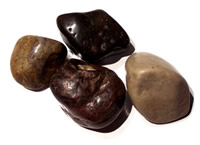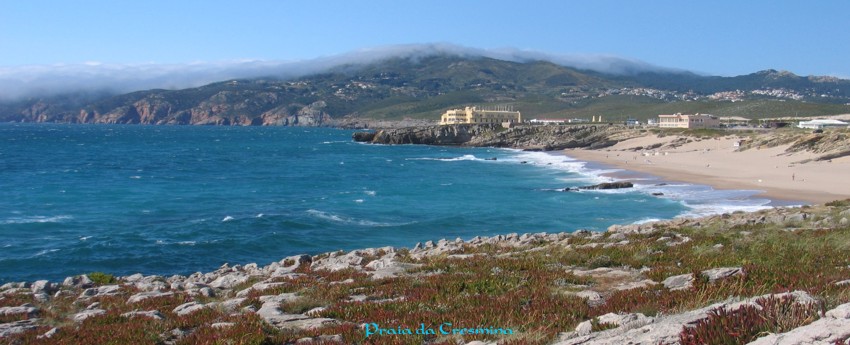
N38º 43.511 W9º 28.570
"Stones in my Stomach": Another fun dinosaur earthcache!
"Stones in my Stomach":Mais uma earthcache com dinossaurios à mistura muito divertida!
With the kind help of fellow geologist Prof. Paulo E.T.F. da Fonseca,
(Faculty of Science, University fo Lisbon)
From the guidelines, as from January 2013"People do not need to wait for permission to log your EarthCache. Requiring someone to wait is not supported by the EarthCache guidelines. People should send their logging task answers to you, then log your EarthCache. When you review their logging task answers, if there is a problem, you should contact them to resolve it. If there is no problem, then their log simply stands."

Gastroliths ('stomach stones' or 'gizzard stones') are rocks, which are or have been held inside the digestive tract of an animal. Among living vertebrates, gastroliths are common among herbivorous birds, crocodiles, alligators, seals and sea lions. Domestic fowl, for instance, require access to 'grit', for the purpose of food-grinding. Gastroliths are retained in the very muscular gizzard and serve the masticatory function of teeth, in an animal without suitable grinding teeth. The grain size of the gastrolith depends upon the size of the animal and its special needs. Particles as small as sand and stones the size of cobbles or greater have been found.
Some extinct animals, such as sauropod dinosaurs, appear to have used stones to grind tough plant matter. Gastroliths have only rarely been found in association with fossils of theropod dinosaurs and a tribulation of their food with the stones is not plausible. Aquatic animals, such as plesiosaurs, may have used them as ballast, to help balance themselves or to decrease their buoyancy, as crocodiles do. More research is needed to understand the function of the stones in aquatic animals. While some fossil gastroliths are rounded and polished, many stones in living birds are not polished at all. Gastroliths associated with dinosaur fossils can be several kilograms in weight. Stones swallowed by ostriches can also reach a length of more than 10 cm.
Geologists usually require several pieces of evidence before they will accept that a rock was used by a dinosaur to aid its digestion. First, the stone must be unlike the rock found in its geological vicinity. Secondly, it should be rounded and polished, because inside a dinosaur's gizzard any genuine gastrolith would have been acted upon by other stones and fibrous materials in a process similar to the action of a rock tumbler. Lastly, the stone must be found with the bones of the dinosaur which ingested it. It is this last criterion that causes trouble in identification, as smooth stones found without context can (possibly erroneously in some cases) be dismissed as having been polished by water or wind. Whittle (1988,9) pioneered scanning electron microscope analysis of wear patterns on gastroliths.
Gastroliths can be distinguished from stream- or beach-rounded rocks by several criteria: gastroliths are highly polished on the higher surfaces, with little or no polish in depressions or crevices, often strongly resembling the surface of worn animal teeth. Stream- or beach-worn rocks, particularly in a high-impact environment, show less polishing on higher surfaces, often with many small pits or cracks on these higher surfaces. Finally, highly polished gastroliths often show long microscopic hairline scratches, presumably caused by contact with a sharp corner of a freshly swallowed stone. Since most gastroliths were scattered when the animal died and many entered a stream or beach environment, some gastroliths show a mixture of these wear features. Others were undoubtedly swallowed by other dinosaurs and highly polished gastroliths may have been swallowed repeatedly.

At Praia da Cresmina, a set of gastroliths has been found associated with skeletal material of undetermined age. The host rocks to these remains are Lower Cretaceous in age (145 – 65 Ma.).
The cache
Your mission, should you chose to accept it, is to go to the coordinates. Point zero will take you to the outcrop of interest. If you are having trouble locating the gastroliths, then use the panoramic of the outcrops supplied (below) and home in on the slab surrounded by the blue line.
Here you will see a limestone slab with some rounded, polished rocks embedded in the limestone. Count them and tell how many you see and what size do they range from. To keep it simple and so I don’t get measurements of 3 metres, I will leave you here some clues:1 - 5 - 6 mm; 2 - 10 – 50 mm; 3 - 10 – 100 mm.
On this outcrop you will also find the remnants of a bone. You should be able to identify it easily once you locate the gastroliths (they are to the right of the bone).
So in order to claim this cache, you have to send me the number of gastroliths as well as their size range - size does matter in this case. E-mail me the answers through my GC profile to validate the answers and get back to you.
NOTE: This is a eyes only location, keep your hands and feet away from the remains so others may enjoy them as well.
NO tell-tale photos in the logs.
Have fun!


Com a amável ajuda do colega geólogo Prof. Paulo E.T.F. da Fonseca,
(Faculdade de Ciências da Universidade de Lisboa)
Gastrólitos são rochas de pequenas dimensões engolidas voluntariamente por animais, e que se alojam em alguma porção de seu trato digestivo. No estômago de crocodilomorfos recentes são registrados gastrólitos que auxiliam o trituramento do alimento no estômago e/ou funcionam como peso de lastro, facilitando a habilidade de mergulho. A preservação de conteúdos gástricos em fósseis é rara, e mesmo restos mais resistentes como os gastrólitos podem se desassociar dos espécimes fossilizados. Fósseis de baurusuquídeos (Baurusuchidae, Cretáceo Superior) têm revelado pequenas rochas localizadas na região ventral, próximas aos ossos da gastrália. Estas rochas apresentam textura e estrutura diferentes das rochas sedimentares circundantes ao espécime fóssil. Os baurusuquídeos são crocodilomorfos de médio porte e hábitos terrestres, inferidos a partir da estrutura de seus apêndices locomotores e morfologia do crânio. São encontrados em bacias cretácicas e paleógenas do Brasil, Argentina, Paquistão, África e Europa. A ocorrência de gastrólitos em crocodilomorfos terrestres como os baurusuquídeos está intimamente associada ao processamento do alimento no estômago.

Na Praia da Cresmina perto do Guincho foi detectado um conjunto de gastrólitos associado a material esquelético, de idade indeterminada, nas rochas do Cretácico inferior (145 - 65 Ma).
A cache:
Caso queiras “encontrar” esta cache, dirige-te às coordenadas que te levarão a um afloramento na Praia da Cresmina. No ponto zero, observa com atenção o afloramento de pequenas dimensões à tua frente. Caso não dês com os gastrólitos, utiliza a foto panorâmica em baixo com o afloramento indicado a azul.
Aqui verás uma laje com “pequenas” rochas polidas, arredondadas e encrustradas na pedra calcária. Este afloramento contém também os restos de um osso que fica à esquerda dos gastrólitos.
Deves observar com atenção e dizer-me quantos gastrólitos se encontram neste afloramento e também dizer-me qual a sua gama de diâmetros. De forma a que eu não recebea tamanhos que excedem o metro linear, dou-vos algumas hipóteses e devem escolher uma: 1 - 5 - 6 mm; 2 - 10 - 50 mm; 3 - 10 - 100 mm. Enviem-me uma mensagem com as devidas respostas paravalidar o found.
NOTA: este local é somente para os olhos. As mãozinhas e os pézinhos que fiquem longe dos gastrólitos para que todos os possam disfrutar durante muito, muito tempo.
Ah! e não coloquem fotos reveladoras nos logs.
Divirtam-se!


 The most exciting way to learn about the Earth and its processes is to get into the outdoors and experience it first-hand. Visiting an Earthcache is a great outdoor activity the whole family can enjoy. An Earthcache is a special place that people can visit to learn about a unique geoscience feature or aspect of our Earth. Earthcaches include a set of educational notes and the details about where to find the location (latitude and longitude). Visitors to Earthcaches can see how our planet has been shaped by geological processes, how we manage the resources and how scientists gather evidence to learn about the Earth. To find out more click HERE.
The most exciting way to learn about the Earth and its processes is to get into the outdoors and experience it first-hand. Visiting an Earthcache is a great outdoor activity the whole family can enjoy. An Earthcache is a special place that people can visit to learn about a unique geoscience feature or aspect of our Earth. Earthcaches include a set of educational notes and the details about where to find the location (latitude and longitude). Visitors to Earthcaches can see how our planet has been shaped by geological processes, how we manage the resources and how scientists gather evidence to learn about the Earth. To find out more click HERE.
______________________________________________________________________________

